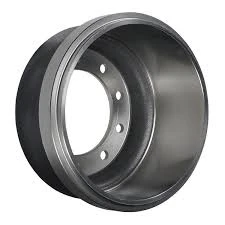
-
 Afrikaans
Afrikaans -
 Albanian
Albanian -
 Amharic
Amharic -
 Arabic
Arabic -
 Armenian
Armenian -
 Azerbaijani
Azerbaijani -
 Basque
Basque -
 Belarusian
Belarusian -
 Bengali
Bengali -
 Bosnian
Bosnian -
 Bulgarian
Bulgarian -
 Catalan
Catalan -
 Cebuano
Cebuano -
 Corsican
Corsican -
 Croatian
Croatian -
 Czech
Czech -
 Danish
Danish -
 Dutch
Dutch -
 English
English -
 Esperanto
Esperanto -
 Estonian
Estonian -
 Finnish
Finnish -
 French
French -
 Frisian
Frisian -
 Galician
Galician -
 Georgian
Georgian -
 German
German -
 Greek
Greek -
 Gujarati
Gujarati -
 Haitian Creole
Haitian Creole -
 hausa
hausa -
 hawaiian
hawaiian -
 Hebrew
Hebrew -
 Hindi
Hindi -
 Miao
Miao -
 Hungarian
Hungarian -
 Icelandic
Icelandic -
 igbo
igbo -
 Indonesian
Indonesian -
 irish
irish -
 Italian
Italian -
 Japanese
Japanese -
 Javanese
Javanese -
 Kannada
Kannada -
 kazakh
kazakh -
 Khmer
Khmer -
 Rwandese
Rwandese -
 Korean
Korean -
 Kurdish
Kurdish -
 Kyrgyz
Kyrgyz -
 Lao
Lao -
 Latin
Latin -
 Latvian
Latvian -
 Lithuanian
Lithuanian -
 Luxembourgish
Luxembourgish -
 Macedonian
Macedonian -
 Malgashi
Malgashi -
 Malay
Malay -
 Malayalam
Malayalam -
 Maltese
Maltese -
 Maori
Maori -
 Marathi
Marathi -
 Mongolian
Mongolian -
 Myanmar
Myanmar -
 Nepali
Nepali -
 Norwegian
Norwegian -
 Norwegian
Norwegian -
 Occitan
Occitan -
 Pashto
Pashto -
 Persian
Persian -
 Polish
Polish -
 Portuguese
Portuguese -
 Punjabi
Punjabi -
 Romanian
Romanian -
 Russian
Russian -
 Samoan
Samoan -
 Scottish Gaelic
Scottish Gaelic -
 Serbian
Serbian -
 Sesotho
Sesotho -
 Shona
Shona -
 Sindhi
Sindhi -
 Sinhala
Sinhala -
 Slovak
Slovak -
 Slovenian
Slovenian -
 Somali
Somali -
 Spanish
Spanish -
 Sundanese
Sundanese -
 Swahili
Swahili -
 Swedish
Swedish -
 Tagalog
Tagalog -
 Tajik
Tajik -
 Tamil
Tamil -
 Tatar
Tatar -
 Telugu
Telugu -
 Thai
Thai -
 Turkish
Turkish -
 Turkmen
Turkmen -
 Ukrainian
Ukrainian -
 Urdu
Urdu -
 Uighur
Uighur -
 Uzbek
Uzbek -
 Vietnamese
Vietnamese -
 Welsh
Welsh -
 Bantu
Bantu -
 Yiddish
Yiddish -
 Yoruba
Yoruba -
 Zulu
Zulu
Exploring the Drawbacks and Limitations of Drum Brake Systems in Modern Vehicles
Disadvantages of Drum Brakes
Drum brakes have been a staple in automotive braking systems for many years, renowned for their cost-effectiveness and simplicity. However, despite their advantages, they come with a number of notable disadvantages that can impact vehicle performance, safety, and maintenance. Understanding these limitations is essential for vehicle owners, manufacturers, and automotive engineers.
1. Heat Dissipation Issues
One of the most significant drawbacks of drum brakes is their heat dissipation capability. During extensive or aggressive braking, drum brakes tend to overheat quickly. The enclosed design of the brake drum makes it difficult for heat to escape, which can lead to brake fade – a reduction in braking power due to overheating. This is particularly concerning in applications that require frequent stops, such as in city driving or on hilly terrains. In contrast, disc brakes, which have an open design, are better at dissipating heat and maintaining consistent braking performance.
2. Reduced Stopping Power
While drum brakes can provide adequate stopping power under normal conditions, their performance can diminish significantly under high-stress scenarios. This is primarily due to the brake drum's ability to trap heat and the mechanical advantage achieved through the shoes pressing against the drum. The increased mass and surface area required can lead to a slower response time compared to disc brakes, which often results in longer stopping distances. In emergency situations, this can pose serious safety risks.
Drum brakes require more frequent maintenance than their disc counterparts. The enclosed design of the drum makes it more difficult to inspect and service the brake components. Consequently, it can be challenging for mechanics to assess the condition of the brake shoes and the drum surface without disassembling the entire unit. Furthermore, drum brakes are more susceptible to wear from debris and moisture accumulation, which may degrade performance unless cleaned and serviced regularly.
what are the disadvantages of drum brakes

4. Weight and Complexity
Another disadvantage of drum brakes is their weight. Generally, drum brake systems are heavier than disc brake systems due to their mechanical complexity and additional components. This additional weight can affect a vehicle’s overall performance, including acceleration and fuel efficiency. For lighter vehicles, the added weight can be particularly detrimental, leading some manufacturers to opt for disc brakes, which offer a more streamlined and lightweight alternative.
5. Equal Wear and Performance Issues
Drum brakes may suffer from uneven wear, especially if the brake shoes do not make uniform contact with the drum surface. This can lead to a reduced braking efficiency and increased possibility of squeaking or grinding sounds when braking. Additionally, because drum brakes have more parts that can wear unevenly compared to disc brakes, they can require more frequent adjustments and replacements, leading to higher long-term maintenance costs.
6. Limited Self-Adjusting Capacity
While some drum brake systems have self-adjusting mechanisms, they often do not work as effectively as those found in disc brakes. This limitation can result in a slower and less responsive braking system if the brakes are not manually adjusted. In contrast, modern disc brakes generally maintain consistent performance without the need for frequent adjustments.
Conclusion
In summary, while drum brakes can be cost-effective and relatively simple in design, their disadvantages cannot be overlooked. Issues such as poor heat dissipation, reduced stopping power, maintenance challenges, added weight, uneven wear, and limited self-adjusting capabilities make them less desirable in comparison to modern disc brake systems. As automotive technology continues to evolve, it is likely that the reliance on drum brakes will diminish in favor of more efficient, durable, and safer alternatives. For vehicle owners, it is crucial to weigh these disadvantages when considering brake maintenance or upgrades to ensure optimal performance and safety.
-
What Are Drum BrakesNewsJul.07,2025
-
Understanding Brake Drum MaterialNewsJul.07,2025
-
Semi-Trailer Brake Drum: A Key Component for Extreme Loads and Long-Distance TransportNewsJul.07,2025
-
Drum Brake Pads for SaleNewsJul.07,2025
-
Brake Drums for SaleNewsJul.07,2025
-
Brake Drum ManufacturerNewsJul.07,2025
-
Aluminum Brake Drums: The Future of High-Performance CarsNewsJul.07,2025
